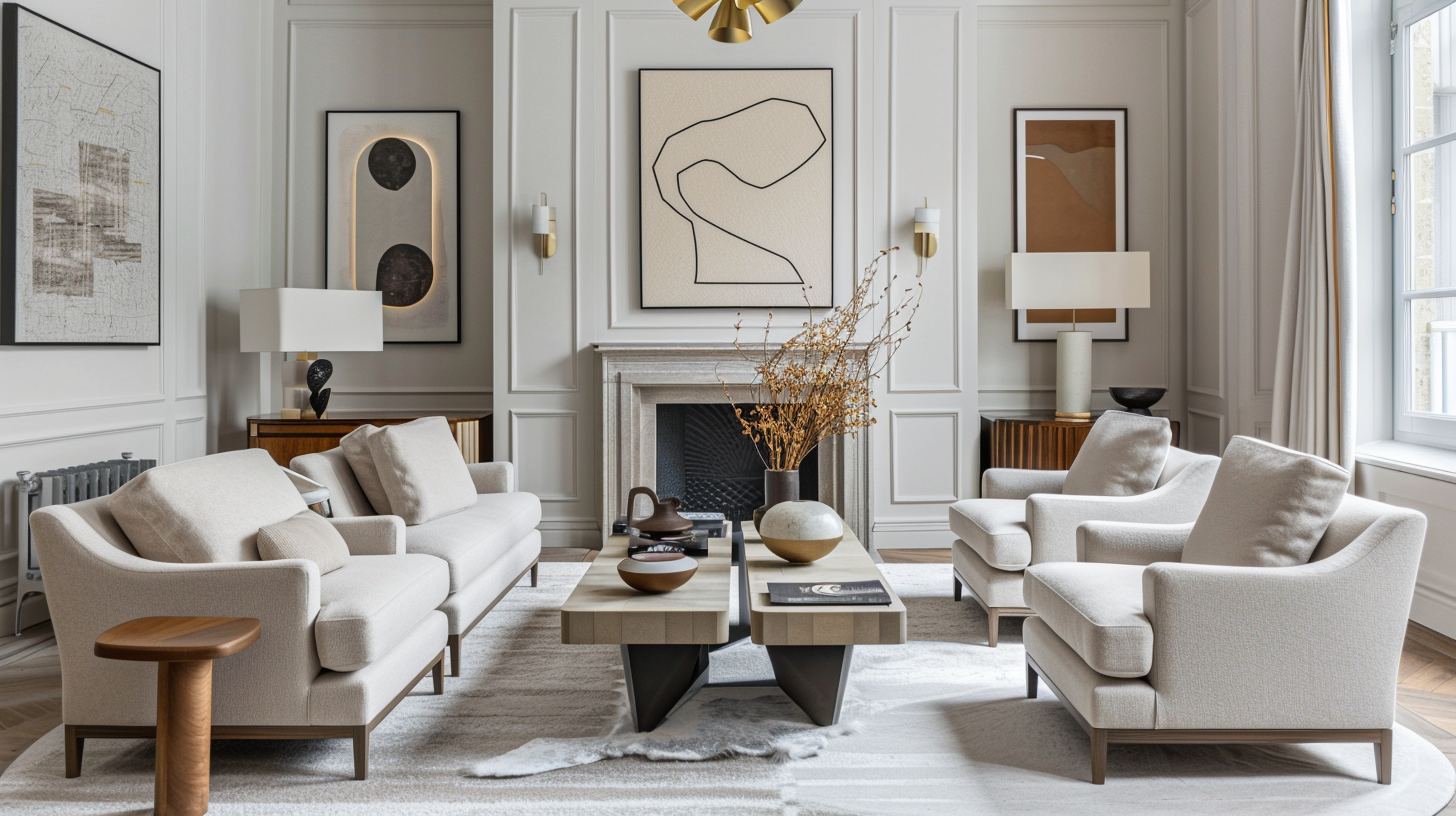
Creating a visually balanced home is not about strict rules—it’s an art form that involves thoughtful decisions about symmetry and asymmetry. The balance between these two principles can add depth, creativity, and a sense of harmony to any space. But how do you effectively incorporate both without losing the visual flow?
Understanding Symmetry and Why It Works
Symmetry is the traditional approach to balance. It’s often used in classical design because it provides a sense of order, stability, and calm. Symmetry involves mirroring elements on either side of a central axis—think of two identical lamps on either side of a sofa or matching chairs in a living room. This balanced setup naturally appeals to the human eye, creating a sense of predictability and comfort. Symmetry works well in spaces where you want to evoke calmness, such as bedrooms or formal dining areas.
However, too much symmetry can also feel rigid or predictable. In modern interior design, breaking the monotony of symmetry with a dash of asymmetry often makes a room feel more dynamic and intriguing.
Introducing Asymmetry for Interest and Movement
Asymmetry, in contrast, relies on balancing visual weight rather than identical objects. It introduces movement and spontaneity into a space. For example, pairing a large artwork with a group of smaller pieces or arranging a bookshelf in a non-uniform way creates visual intrigue. Asymmetry encourages your eye to move across the room, allowing you to appreciate each design element individually.
Asymmetry is perfect for creating focal points or highlighting a specific area of a room. It’s widely used in living rooms and open-plan areas where flow and movement are important.
How to Blend Symmetry and Asymmetry in Your Home
To achieve a balanced design, it’s essential to know how to incorporate both symmetry and asymmetry effectively. Here are some ideas:
- Symmetrical Foundation: Start by creating a symmetrical layout with larger furniture pieces. For example, place a sofa opposite a fireplace, with matching chairs on either side. This foundation provides the base for a calm and organized room.
- Asymmetrical Accents: Once you have a symmetrical base, bring in asymmetrical decor elements such as varied-sized vases, asymmetrical art arrangements, or a collection of plants. These accents break up the predictability, adding depth and creativity.
- Art and Wall Decor: Hanging wall art in a symmetrical manner can look formal and classic, but for a more contemporary feel, try a gallery wall with an asymmetrical layout. Mix different frame sizes and shapes while maintaining a cohesive theme or color palette.
- Lighting: Symmetry in lighting, like matching table lamps, can provide a balanced look. However, asymmetry can be introduced by using a statement pendant light on one side of a room, balanced by a cluster of smaller lighting fixtures on the opposite side.
Why Balance Matters in Interior Design
At the heart of every well-designed space is balance. The interplay of symmetry and asymmetry is one of the most effective ways to achieve this. Symmetry provides structure and predictability, while asymmetry brings life, movement, and interest. By combining both, you can create a space that feels both harmonious and unique.
Ultimately, finding your own balance between these design principles allows your home to reflect your personal style. A balanced space doesn’t have to be about rigid rules—experiment with different combinations of symmetrical and asymmetrical elements to see what works best for you.


